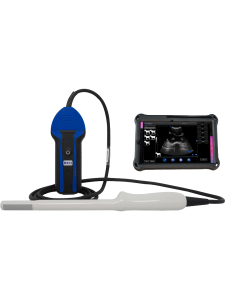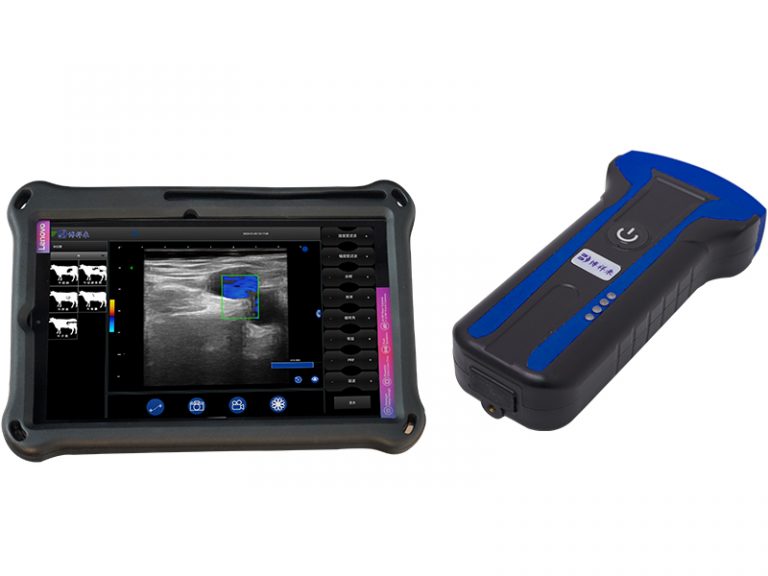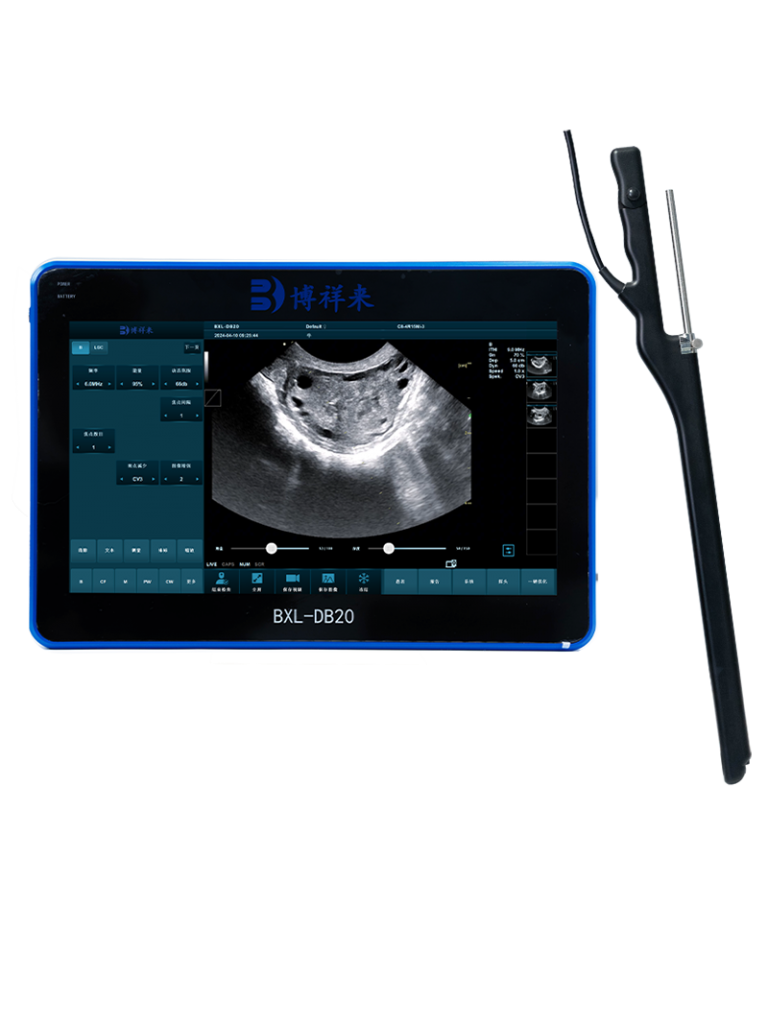Ultrasound Animal Husbandry Medical Equipment for Sheep: BXL-S103
In the world of modern livestock farming, ensuring the health and productivity of sheep is crucial for the success of the operation. One of the most valuable tools for improving animal care and optimizing herd management is ultrasound technology. The BXL-S103 ultrasound is an advanced animal husbandry medical equipment specifically designed to meet the needs of sheep farmers and veterinarians. Offering high-resolution imaging and versatile functionality, the BXL-S103 ultrasound has become an essential tool in sheep health management, particularly in the areas of reproduction, disease diagnosis, and overall herd health monitoring.

In this article, we will explore the key features, benefits, and applications of the BXL-S103 ultrasound for sheep, demonstrating how it can improve flock management, streamline veterinary care, and contribute to healthier, more productive sheep.
What is the BXL-S103 Ultrasound for Sheep?
The BXL-S103 ultrasound is a state-of-the-art diagnostic device designed specifically for sheep in the field of animal husbandry. Utilizing high-frequency sound waves, this ultrasound system generates real-time images of internal organs, tissues, and reproductive structures, providing a non-invasive method for evaluating the health and well-being of sheep.
Whether you are a veterinarian or a sheep farmer, the BXL-S103 ultrasound is an indispensable tool for early disease detection, reproductive health monitoring, and the overall management of sheep herds. Its advanced imaging technology offers clarity and accuracy, making it easier to identify health issues and implement appropriate treatment plans before conditions worsen.
Key Features of the BXL-S103 Ultrasound for Sheep
The BXL-S103 ultrasound is packed with features that make it an ideal choice for animal husbandry medical equipment. Below are some of its key features:
1. High-Resolution Imaging
One of the most critical aspects of any ultrasound system is its image quality, and the BXL-S103 ultrasound excels in this area. It provides high-resolution imaging, allowing for clear and detailed views of the internal structures of sheep, including the heart, kidneys, liver, and reproductive organs. This clarity is essential for accurate diagnosis, early disease detection, and monitoring of fetal development during pregnancy.
2. Portable and Compact Design
The BXL-S103 ultrasound is designed to be highly portable, making it ideal for on-site use in the field. Its lightweight and compact design allow veterinarians and farmers to easily move the device from one location to another, whether working in a barn, pasture, or veterinary clinic. The portability of the BXL-S103 ultrasound makes it convenient for routine check-ups, emergency care, and breeding management without the need to transport sheep to a veterinary clinic.
3. Multi-Species Compatibility
While the BXL-S103 ultrasound is specifically designed for sheep, it can also be used for other livestock species, including goats, cattle, and even smaller animals like dogs and cats. This makes it a versatile piece of equipment for veterinary practices that treat a variety of animals. The system is compatible with multiple probe options, enabling veterinarians to perform a range of diagnostic exams on different animal species.
4. User-Friendly Interface
The BXL-S103 ultrasound features an intuitive, touchscreen interface that simplifies the operation of the system. Its easy-to-navigate design ensures that veterinarians and farmers can quickly learn how to use the ultrasound and obtain the necessary diagnostic images. The interface also includes options for automatic image optimization and one-touch controls, making the entire process efficient and user-friendly, even for those with limited experience using ultrasound technology.
5. Doppler Imaging Capability
The BXL-S103 ultrasound is equipped with Doppler imaging technology, which is used to assess blood flow and detect abnormalities in the circulatory system. This is particularly useful for monitoring heart health and identifying circulatory issues in sheep. Doppler ultrasound can also be used to monitor the blood flow to reproductive organs, aiding in the evaluation of the health of pregnant ewes and early detection of potential complications during pregnancy.
6. Durability and Rugged Construction
Built to withstand the demands of working in agricultural and veterinary environments, the BXL-S103 ultrasound is durable and rugged. It can handle the rough conditions typically found on farms, including exposure to dust, moisture, and occasional bumps. Its long-lasting construction ensures that it will continue to perform reliably over time, even with frequent use.
Applications of the BXL-S103 Ultrasound for Sheep
The BXL-S103 ultrasound is a versatile tool that provides several applications for managing the health and productivity of sheep herds. Below are some of the key ways this ultrasound system is used:
1. Pregnancy Diagnosis and Monitoring
One of the most common uses of the BXL-S103 ultrasound is in pregnancy diagnosis for sheep. Early detection of pregnancy is essential for managing lambing schedules, ensuring proper care for pregnant ewes, and optimizing flock productivity. The BXL-S103 ultrasound allows for early pregnancy detection, often as early as 30 days post-breeding, providing crucial information about the number of fetuses and their development.
Moreover, the ultrasound system is invaluable for fetal monitoring throughout the pregnancy. Veterinarians can assess the health of the fetuses, detect multiple pregnancies, and ensure proper fetal development. If there are any complications, such as abnormal positioning or developmental issues, they can be addressed promptly to prevent lambing difficulties.
2. Reproductive Health Monitoring
The BXL-S103 ultrasound plays a critical role in reproductive health monitoring for sheep. By examining the ovaries, uterus, and reproductive organs, veterinarians can identify conditions such as cysts, infections, or tumors that could affect fertility. Regular monitoring of reproductive health helps increase fertility rates and ensures that ewes are ready for breeding at the optimal time.
In addition, Doppler ultrasound can assess blood flow to the reproductive organs, providing valuable information about the health of the ovaries and uterus and helping to identify potential issues that could affect the reproductive cycle.
3. Disease Detection and Diagnosis
The BXL-S103 ultrasound is also used for detecting internal diseases and other health conditions in sheep. The system enables veterinarians to examine internal organs, including the liver, kidneys, and lungs, for signs of disease, infection, or injury. Early detection of conditions like liver abscesses, kidney stones, or respiratory infections can lead to more effective treatment and a higher chance of recovery for the sheep.
By identifying potential health issues before they become severe, the BXL-S103 ultrasound helps prevent the spread of disease within the flock and reduces overall veterinary costs by enabling early intervention.
4. Abdominal Imaging and Gastrointestinal Health
Abdominal imaging is another important application of the BXL-S103 ultrasound for sheep. The system allows veterinarians to examine the gastrointestinal system for issues such as bloating, abscesses, or digestive disturbances. Abdominal ultrasound helps identify the root cause of symptoms like weight loss, reduced appetite, or abdominal pain, enabling prompt diagnosis and treatment.
5. Lameness and Musculoskeletal Imaging
For sheep showing signs of lameness or difficulty walking, the BXL-S103 ultrasound can be used to examine the musculoskeletal system. By imaging the joints, tendons, and ligaments, the system helps diagnose injuries such as sprains, strains, or fractures, which can affect the animal’s mobility and productivity.
6. Emergency Diagnostics
In emergency situations, where quick decisions are needed, the BXL-S103 ultrasound can provide rapid insights into the internal condition of sheep. Whether it’s evaluating trauma from an accident or identifying sudden illness, ultrasound technology helps provide a quick and accurate diagnosis, allowing veterinarians to take immediate action.
Benefits of the BXL-S103 Ultrasound for Sheep
- Early Disease Detection: The ability to detect diseases early allows for faster treatment, better recovery rates, and reduced risk of disease transmission within the flock.
- Improved Reproductive Efficiency: Pregnancy diagnosis and reproductive health monitoring help increase fertility rates, reduce lambing complications, and optimize breeding schedules.
- Non-Invasive: Ultrasound is a non-invasive diagnostic tool, which reduces stress on the sheep and eliminates the need for more invasive procedures.
- Increased Productivity: By improving herd health and reproductive success, the BXL-S103 ultrasound helps increase overall farm productivity and profitability.
- Portability: The lightweight, portable design allows for easy use in the field, minimizing the need for transporting animals to a clinic for diagnostic tests.




